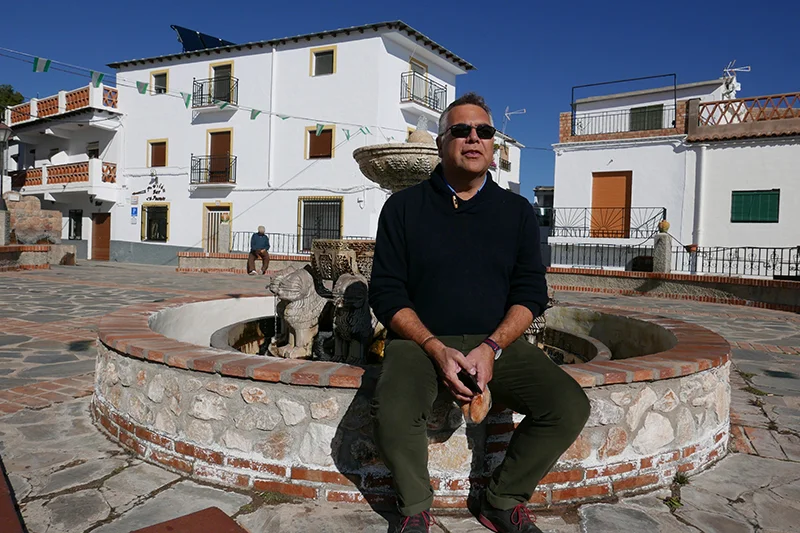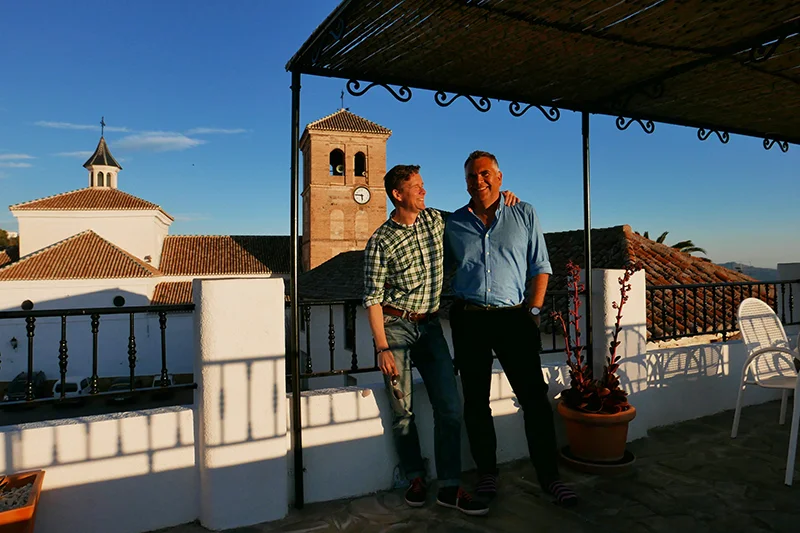Mini Road Trip Part 2 - La Casa de Gerald Brenan and Válor
“Yegen… was a poor village, standing high above the sea, with an immense view in front of it. With its grey box-shaped houses of a battered Corbusier style, all running down the hill and fusing into one another, and its flat clay roofs and smoking chimneys, it suggested something that had been made out of the earth by insects.” Gerald Brenan, South from Granada.
We had no idea what to expect in Yegen, but we knew that we wanted to see the house where Gerald Brenan lived; the village that formed the basis of his account of life in Spain between 1920 and 1934, so almost 100 years ago.
Yegen is a small tumble of white buildings falling away from the ‘main’ road that runs above it on its way east. Little appears to have changed since Brenan’s time, in that the village does have an immense view in front of it, although I am not so sure that it looks so poor any more. Some of the old village properties have been bought by more contemporary travellers who have restored them into slightly less battered Corbusier-like cubes.
The village is immensely welcoming and any villagers you meet are only too glad to greet you with a smile. We had no idea where Gerald Brenan’s house might be, and certainly the village edge bore no signs to suggest that the author’s house lay within. We spied a lady hanging out her laundry on her roof terrace and asked if she knew where we could find La Casa de Gerald Brenan; directions indicated that we were not far away. Ever ones to be lured by the delights of the local Panaderia, we fortuitously stumbled upon one, bought some galletas and asked again where Brenan’s house could be found. Apparently it was literally around the corner, and we could knock on the door and ask the current owner if we could see the patio. Hmm….for some reason, I think we both assumed that the house would be either empty or would be a museum, not actually lived in, and neither of us felt brave enough to knock our way into the life of a poor home owner to ask if we could snoop around a dead author’s former house.
From the outside, the property is unassuming, bar the ceramic plaque that indicates that this was, indeed, where Brenan lived. But these blank white walls were the walls that Brenan’s slightly neurotic stonemasons shaped to bring light into the interior and open up views of the village. I say neurotic, as the stonemasons all seemed to be prone to madness, and the daughter of one of these masons was also subject to bouts of madness and “when this happened, she became a nymphomaniac”!
So, unable to pry, we went in search of lunch at a bar that had been recommended on TripAdvisor, and that we found right at the bottom of the village (meaning that after lunch we had no option but to tackle the steep climb back up). Bar Muñoz was fun, and we sat outside in brilliant sunshine to enjoy a couple of beers and some rather tasty tapas. We were clearly a bit of a novelty, and the villagers who were holed up inside the bar made frequent trips outside just to keep an eye on us. One of these villagers must have been close to 100 years of age (he was probably about 65), and he was fascinated by us, but tried to disguise his curiosity behind a sneaky cigarette as a he staggered in and out of the hostelry with regularity. Bearing in mind that Brenan wrote that the Yegen villagers never dated anyone from any of the neighbouring villages, it is perfectly possible that these locals were all related to those Yegen inhabitants present when Gerald lived here. The older chap from the bar put me in mind of one of the best passages in Gerald Brenan's book, at the point when the writer is describing his servant: "Her tragedy was her face. She never let water touch it, but every morning and evening washed it with a strong aniseed spirit which burned and shrivelled the skin till it looked like the side of a Spanish sierra." I think Andrew is worried that, after too much sun, my face will take on a similar appearance.
Bar Muñoz, Yegen
We had arranged to spend the night in a bed and breakfast in the next village along, Válor, and we aimed to be there at around 5pm in time to relax and take a wander before dinner. The B&B, Los Arcos, was well reviewed and it didn’t disappoint. The English owners, David and Jill, could not have been more welcoming and we thoroughly enjoyed our stay.
The roof terrace of Los Arcos B&B, Valor.
Valor
That evening, we ventured out for dinner at one of the village’s restaurants, Aben Humeya, a very traditional bar and, in seemingly traditional style, run by one woman who waited tables, served behind the bar and did the cooking. Mind you, we did see another helper in the kitchen - a middle-aged lady with a magnificent hairdo who looked as though she had just popped by on her way back from a shopping trip. In fact, whilst cooking food for us and the other patrons, the two ladies did take out pairs of trousers, newly bought, to have a good look and compare. Fascinating.
The food was delicious! Local goat casserole, local cheeses, lomo a la plancha all washed down with a local vino rosado. In Gerald Brenan’s time, Spanish families used to have what was called a mesa camilla; a circular table with a thick blanket-like table cloth that extended to the floor. Beneath the table top, and in the centre, a brazier would be lit. Diners would then tuck their legs under the table, shrouded by the blanket and the brazier would keep them warm while they chatted and dined.
“It has sometimes occurred to me that one of the causes of the decline of Spain in the seventeenth century may have lain in this circular table.” Gerald Brenan.
I relate that tale, as we had such a table in Bar Aben Humeya, although the brazier that tended to emit toxic fumes was replaced, fortunately, by a small electric radiator.
We throughly enjoyed our evening in Válor. Our hosts, David and Jill, informed us that their spacious and welcoming B&B was on the market as they were approaching retirement age and planned to spend a little more time back in the UK. The couple had run a successful hiking holiday business from this property, and their online reviews ensured a steady stream of visitors throughout the year. This information certainly set the old cogs whirring in both our minds that evening and throughout the next day.














